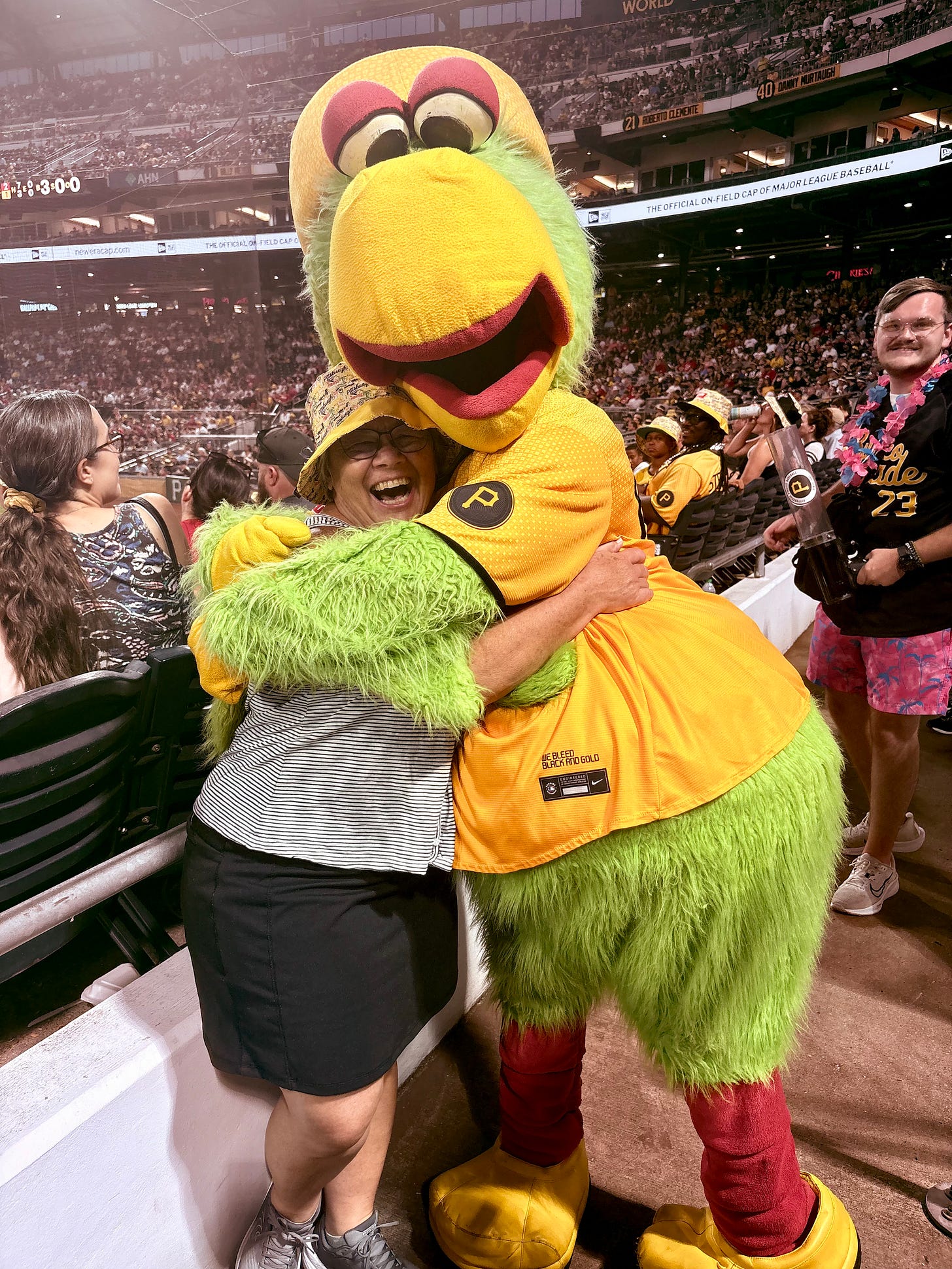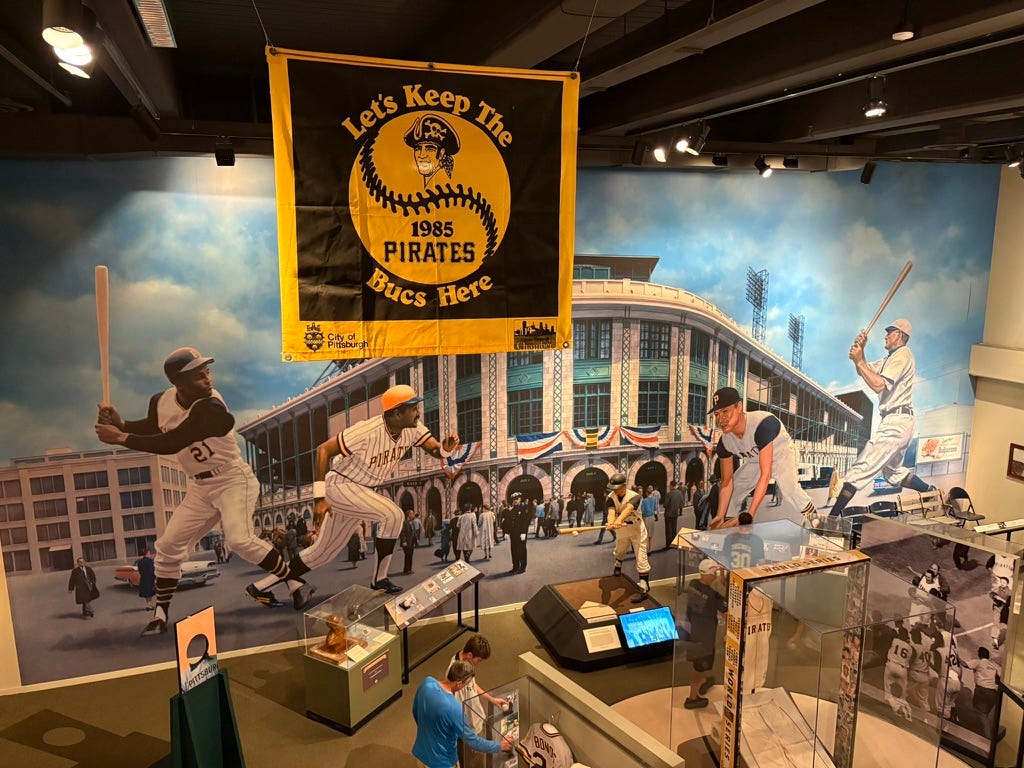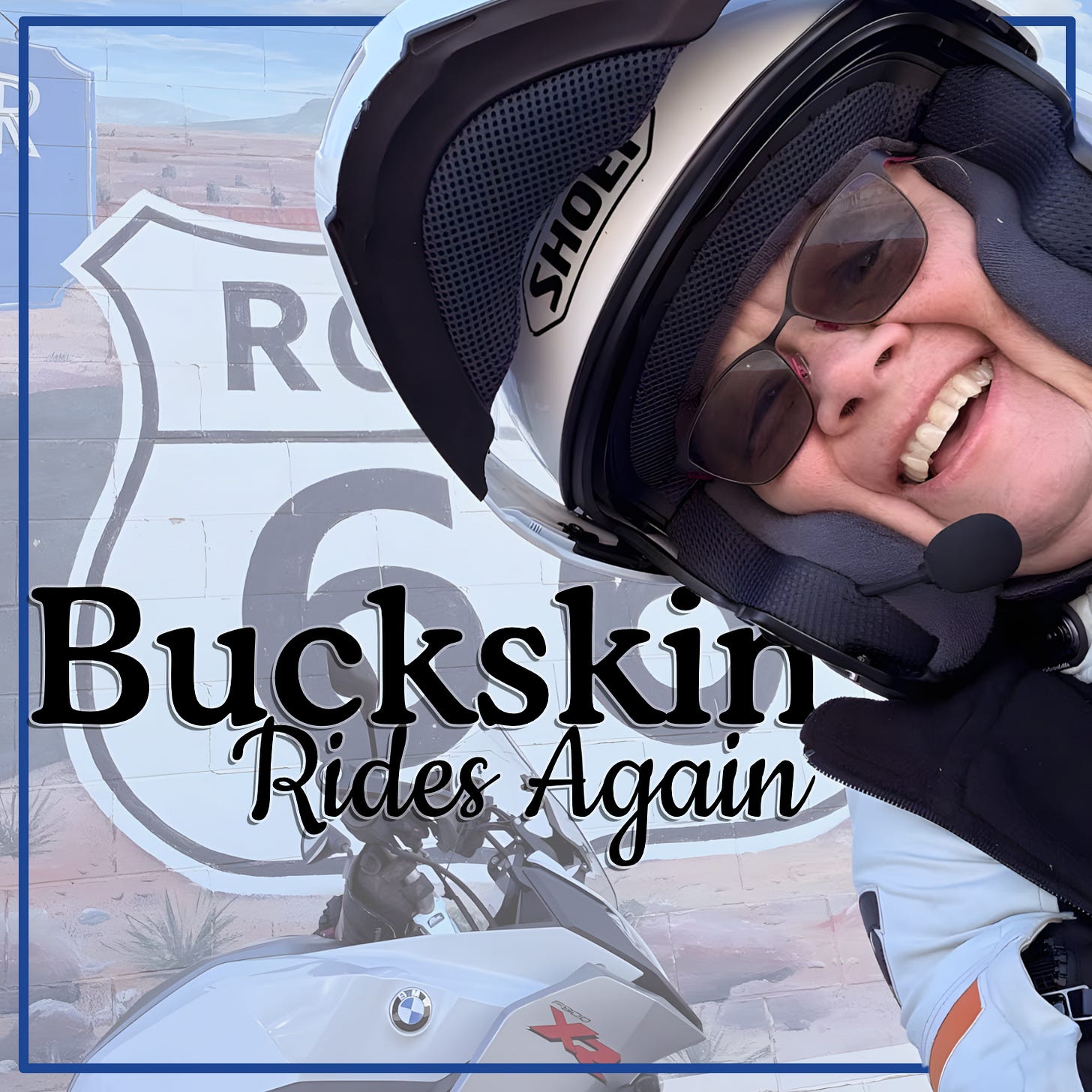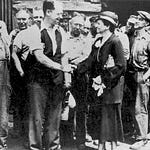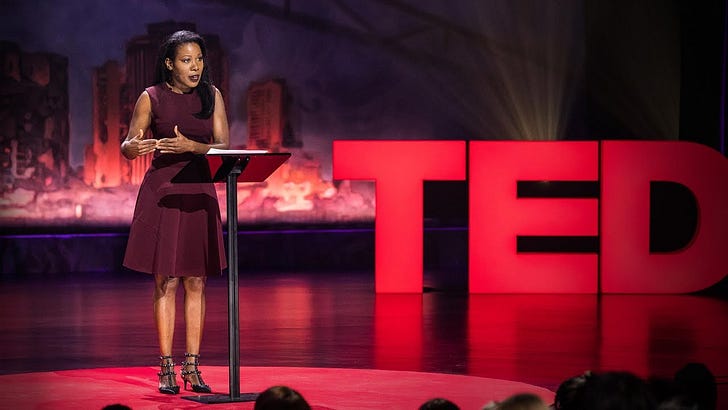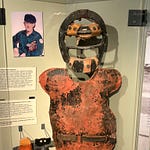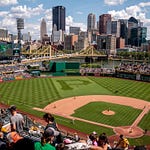I felt like I was twenty again, introducing my boyfriend Matt to my parents in a rush of hope they would like him. But this time, Matt was my spouse of 40 years and I was introducing him to Pittsburgh.
From our Airbnb on Mt. Washington, the whole city lay at our feet—426 bridges, mostly yellow, strung across rivers like necklaces, glass towers glinting where smokestacks once stood, and of course Point Park, headwaters of the Ohio River.
We boarded the Duquesne Incline, its wooden car polished by a century of hands and dungaree work pants. The pressed-tin ceiling gleamed like a copper penny, and an old lantern swung overhead as if it remembered gaslight. Even the lettering on the sign—Duquesne Incline Car #2 seemed to whisper history.
We rattled down the hillside toward the city, then hoofed it to PNC Park to watch the Pirates play the Reds in a river rivalry. The closer we got to the Clemente Bridge, the more fans we saw in yellow gear. Matt struck up a conversation with a couple wearing shirts that looked Hawaiian at first glance, but instead of hibiscus and palm fronds, the fabric was scattered with Pittsburgh’s own icons—bridges, skyline, maybe even a pierogi or two. It was the perfect welcome: playful, civic-proud, and just a little kitschy.
The woman tipped us off that it was Bucket Hat Night at the stadium, and I felt a silly rush of adrenaline at the thought of scoring fanwear just for walking through the gate.
This was my first night at a professional baseball game, and I suspect someone alerted the whole stadium staff because our section usher even finagled a photo opp for me with the Pirate Parrot.
I don’t know much about baseball, but I do know about people watching, and I got more than I bargained for that night. Little kids with their scorecards and ball mitts, camera kisses, and of course the “Great Pittsburgh Pierogy Race” sponsored by Mrs. T’s Pierogies.
Matt had to ask what a pierogi really is, since they were human-sized on the track surrounding the field. If you’re also in need of the information, it’s an Eastern European dumpling, usually stuffed with potatoes, cheese, or sauerkraut—comfort food carried here by the waves of Polish, Slovak, and Ukrainian immigrants who once poured into the mills and mines. In Pittsburgh, it’s been elevated from kitchen staple to cultural mascot, and nowhere is that clearer than in the delirious spectacle of grown adults racing around the diamond in dumpling suits.
But not every story in Pittsburgh that week brought pep to my step. On August 7, ICE agents raided Emiliano’s, a Mexican restaurant chain, detaining 16 workers, leaving broken doors, trashed kitchens, and fear in their wake. Here’s an update on that story.
The ICE raid at Emiliano’s echoed an old Pittsburgh story. A century ago, the “new” immigrants bringing their dumplings from Poland, Slovakia, and Italy were branded as dangerous or unfit, their strikes met with state militias and Pinkertons, their very presence resented by nativists and the Ku Klux Klan.
Roughly a hundred years ago, nativist tensions boiled over in Carnegie, just a few miles from where Matt and I were staying. On August 25, 1923, thirty thousand Klansmen gathered in nearby Scott Township to initiate new members, then—against the warnings of local officials—marched into Carnegie, a borough known for its proud Irish Catholic community. As they crossed the Glendale Bridge, residents met them with rocks and clubs. Shots followed, leaving more than a hundred people injured and one Klansman dead.
In the aftermath Carnegie residents were charged, Klansmen were not, and the national Klan leader, Hiram Wesley Evans, used the death as propaganda to lure even more recruits. Yesterday’s “foreign” Catholics and Slavs, today’s Mexican restaurant workers—the names and cuisines change, but the scapegoating machinery looks hauntingly familiar.
Yet even in those dark chapters, people found ways to knit themselves together—through churches, clubs, and often through sport. Pittsburgh has long used games as a kind of glue, binding neighborhoods that outsiders tried to divide (as you learned in August Trivia).
I saw it again when Matt and I visited the Western Pennsylvania Sports Museum inside the Heinz History Center, where the displays trace everything from mill league softball to the Steelers’ dynasty years.
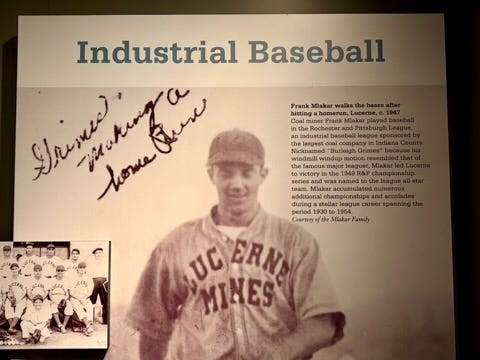
If the Sports Museum showed how games helped Pittsburghers find belonging, the city’s native son and playwright August Wilson revealed the same search playing out in living rooms and backyards.
I’m not a theatah person, but everyone I know from Pittsburgh insisted I visit the August Wilson African American Cultural Center, which honors the city’s most famous playwright. Their pride was unmistakable: to Pittsburghers, Wilson is both neighbor and national treasure, their own Shakespeare whose words have traveled far beyond the Hill District streets—once called “Little Harlem” for their music and community. I went expecting to be dutiful, maybe polite. Instead, I was surprised at how deeply the exhibit pulled me into the Black experience.
The Writer’s Landscape is no ordinary museum gallery. It’s an immersive journey through Wilson’s American Century Cycle—ten rooms, each devoted to one of his plays, plus recreations of his office and a diner where he listened and wrote. The spaces are staged as acts—The Coffee Shop, The Office, The Street—and together they form a living map of the places, people, and rhythms that shaped his work.
The Hill District came alive for me not only in the exhibit but in a live production of Fences at Wilson’s childhood home. Watching it there—surrounded by the very streets and houses that inspired the play—drove home how rooted his work is in this place. If you can’t get to a stage performance, the film adaptation with Denzel Washington and Viola Davis carries much of the same power.
Our guide at The Writer’s Landscape, a retired University of Pittsburgh employee, told us she used to look down from her office window and see Wilson sitting on Pitt’s quad with his notebook. He wasn’t idling—he was listening, taking notes, watching the small dramas of everyday life. She also told us that in tenth grade, Wilson was accused of plagiarism when he turned in a 20-page paper on Napoleon. His teacher couldn’t believe a boy his age could produce such work. In truth, he had already been writing assignments for his older sister to help her graduate. Rather than defend him, the school pushed him out.
The exhibit underscored how Wilson turned exclusion into fuel for his art.
I often find myself the only white visitor at African American cultural sites, but that wasn’t the case here. Seeing other white tourists walk those rooms alongside me gave me hope that perhaps the maxim is sinking in: Black history is American history.
What I recognized in Wilson wasn’t just theater, it’s the fruits of what can happen when writers listen. When we sit still, gathering voices, and noticing how they fit into the larger story. It’s a practice I lean on too, although not as elegantly or prolifically as Wilson, whether I’m writing about roads, rivers, or the memories my own family carries.
If that kind of listening interests you, I’m exploring it more fully in Buckskin Rides Again, my weekly series about a 4,820-mile motorcycle journey through family, memory, and the American road.
You can catch up on past dispatches here, and claim your free subscription.




